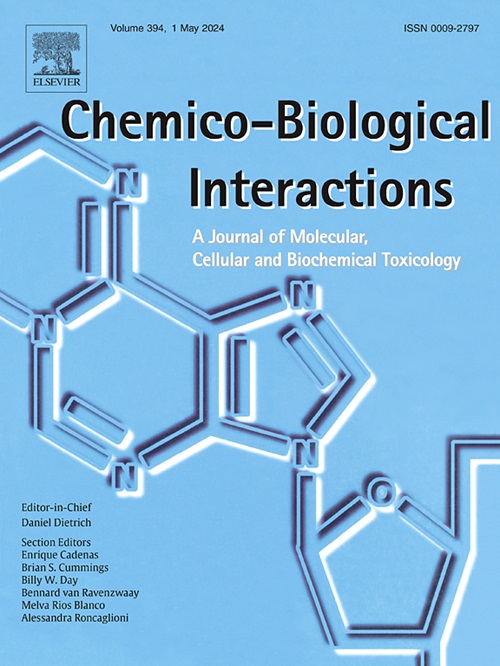非诺贝特通过激活 PPARα-YAP 信号通路诱导衰老小鼠肝脏肿大
IF 4.7
2区 医学
Q1 BIOCHEMISTRY & MOLECULAR BIOLOGY
引用次数: 0
摘要
非诺贝特是一种治疗高甘油三酯血症的临床处方药,也是一种典型的过氧化物酶体增殖激活受体α(PPARα)激动剂。我们以前曾报道过非诺贝特诱导成年小鼠肝脏肿大,部分是通过是相关蛋白(YAP)信号通路。然而,非诺贝特对衰老小鼠肝脏肿大和YAP信号通路的影响仍不清楚。本研究利用D-半乳糖诱导的衰老小鼠、自然衰老小鼠和衰老加速小鼠P8(SAMP8)研究了衰老对非诺贝特诱导的肝脏增大和YAP信号激活的影响。结果表明,衰老小鼠非诺贝特诱导的肝脏肿大与成年小鼠一致。非诺贝特对中央静脉(CV)周围肝细胞增大和门静脉(PV)周围肝细胞增殖的影响在成年小鼠和衰老小鼠之间具有可比性。在非诺贝特治疗后,两组之间 PPARα 下游蛋白的上调没有明显差异。非诺贝特处理还增加了增殖相关蛋白的表达,并在两组中以相似的程度激活了YAP信号通路。总之,这些结果表明,非诺贝特诱导的肝脏肿大和YAP通路的激活在成年小鼠和衰老小鼠中是一致的,表明非诺贝特促进肝脏肿大的作用及其对PPARα和YAP通路的激活与衰老无关。这些发现为非诺贝特在老年患者中的临床应用提供了新的视角,并为PPARα在肝脏肿大中的作用提供了新的见解。本文章由计算机程序翻译,如有差异,请以英文原文为准。
Fenofibrate induces liver enlargement in aging mice via activating the PPARα-YAP signaling pathway
Fenofibrate is a clinically prescribed drug for treating hypertriglyceridemia, which is also a classic peroxisome proliferator-activated receptor α (PPARα) agonist. We previously reported that fenofibrate induced liver enlargement in adult mice partially through activation of the yes-associated protein (YAP) signaling pathway. However, the effects of fenofibrate on liver enlargement and the YAP signaling pathway in aging mice remain unclear. In this study, D-galactose-induced aging mice, naturally aging mice, and senescence-accelerated mice P8 (SAMP8) were used to investigate the effects of aging on fenofibrate-induced liver enlargement and YAP signaling activation. The results showed that fenofibrate-induced liver enlargement in aging mice was consistent with that of adult mice. The effects of fenofibrate on hepatocyte enlargement around the central vein (CV) area and hepatocyte proliferation around the portal vein (PV) area were comparable between adult and aging mice. There was no significant difference in the upregulation of PPARα downstream proteins between the two groups following fenofibrate treatment. Fenofibrate treatment also increased the expression of proliferation-related proteins and activated the YAP signaling pathway to a similar degree in both groups. In summary, these results demonstrate that the fenofibrate-induced liver enlargement and activation of the YAP pathway are consistent between adult and aging mice, indicating that the effects of fenofibrate on promoting liver enlargement and its activation of the PPARα and YAP pathway were independent of aging. These findings offer a new perspective for the clinical use of fenofibrate in elderly patients and provide a new insight for the role of PPARα in liver enlargement.
求助全文
通过发布文献求助,成功后即可免费获取论文全文。
去求助
来源期刊
CiteScore
7.70
自引率
3.90%
发文量
410
审稿时长
36 days
期刊介绍:
Chemico-Biological Interactions publishes research reports and review articles that examine the molecular, cellular, and/or biochemical basis of toxicologically relevant outcomes. Special emphasis is placed on toxicological mechanisms associated with interactions between chemicals and biological systems. Outcomes may include all traditional endpoints caused by synthetic or naturally occurring chemicals, both in vivo and in vitro. Endpoints of interest include, but are not limited to carcinogenesis, mutagenesis, respiratory toxicology, neurotoxicology, reproductive and developmental toxicology, and immunotoxicology.

 求助内容:
求助内容: 应助结果提醒方式:
应助结果提醒方式:


